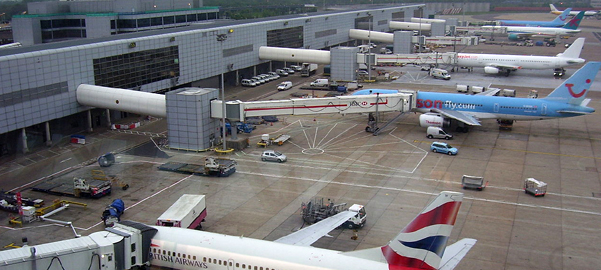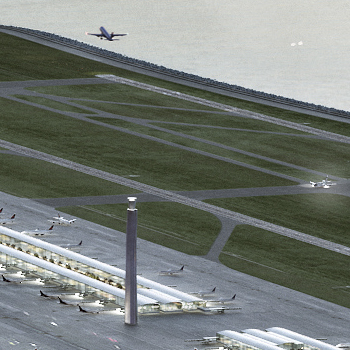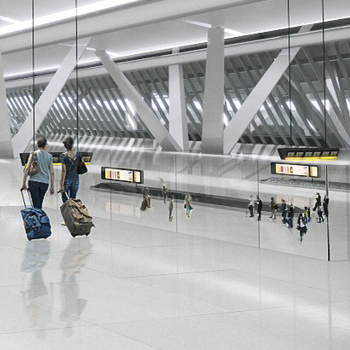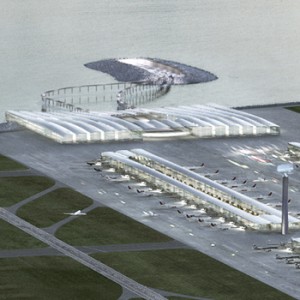 On 7 September 2012 the UK government announced the creation of an independent aviation commission, chaired by Sir Howard Davies, to identify and report on options for maintaining the UK’s status as a global aviation hub. The commission is due to report in 2013 on whether there is a need for additional runway capacity and then subsequently on options for siting any new runway capacity.
On 7 September 2012 the UK government announced the creation of an independent aviation commission, chaired by Sir Howard Davies, to identify and report on options for maintaining the UK’s status as a global aviation hub. The commission is due to report in 2013 on whether there is a need for additional runway capacity and then subsequently on options for siting any new runway capacity.
While we await the Davies commission findings the aviation industry is arguing persuasively that, with Heathrow and Gatwick both operating close to their limits, there is a shortage of runway capacity serving London and the south-east and, unless new capacity is provided, this shortage will only worsen over the coming decades threatening London’s position as a world leading business and financial centre.
In order for the UK to maintain its position in the north European market it is argued that London needs a hub airport and modern hub airports require at least three runways, preferably four. Heathrow, London’s current hub, is falling behind as competitor airports at Paris, Amsterdam and Frankfurt expand their runway capacity.
This website does not consider the need for new runway capacity since that is a matter that the Davies commission is currently assessing. We have instead worked on the assumption that the aviation industry’s case is broadly correct that with a growing population the demand for air travel will also grow and within the next 30 years or so south-east England will require a four runway hub airport with room for further expansion in the longer term.
 A four runway airport requires a considerable area of land, around 25 square km is needed for the runways alone – if the runways are to be sufficiently separated to operate independently. However the impact of the airport on the surrounding community is very much more extensive. At Heathrow the area where airport noise exceeds 57db (the level at which the government says noise becomes “a community annoyance”) exceeds 100 square km seriously affecting the lives of over 250,000 residents. This noise footprint is for only two runways.
A four runway airport requires a considerable area of land, around 25 square km is needed for the runways alone – if the runways are to be sufficiently separated to operate independently. However the impact of the airport on the surrounding community is very much more extensive. At Heathrow the area where airport noise exceeds 57db (the level at which the government says noise becomes “a community annoyance”) exceeds 100 square km seriously affecting the lives of over 250,000 residents. This noise footprint is for only two runways.
South-east England is a densely populated region with high land values and a site large enough for a four runway airport cannot be found without considerable resistance from the affected local communities and their political representatives. The level of community resistance means that it is unlikely that any of the existing airports serving London can be expanded to four runways; the political, social and environmental impact would be simply too great.
 The alternative, for an island nation like the UK, is to locate the airport offshore – a solution recently adopted at South Korea’s new Incheon Airport at Kansai Airport in Japan and Chep Lap Kok in Hong Kong. Since the early 1970s there have been several proposals for locating a new airport in the Thames estuary starting with the Maplin sands proposal on the Essex shore and later with sites nearer the centre of the estuary such as the Marinair proposal. More recently sites attached to the Kent shore have been suggested at Cliffe marshes, the Isle of Sheppey, and Lord Foster’s proposal at the Isle of Grain. Most recently Testrad has proposed an offshore site on the Kentish Flats. Further details for many of these proposals can be found from the web links on this website’s Links page.
The alternative, for an island nation like the UK, is to locate the airport offshore – a solution recently adopted at South Korea’s new Incheon Airport at Kansai Airport in Japan and Chep Lap Kok in Hong Kong. Since the early 1970s there have been several proposals for locating a new airport in the Thames estuary starting with the Maplin sands proposal on the Essex shore and later with sites nearer the centre of the estuary such as the Marinair proposal. More recently sites attached to the Kent shore have been suggested at Cliffe marshes, the Isle of Sheppey, and Lord Foster’s proposal at the Isle of Grain. Most recently Testrad has proposed an offshore site on the Kentish Flats. Further details for many of these proposals can be found from the web links on this website’s Links page.
All the sites within the estuary have significant disadvantages. Every one is located in at least one internationally designated environmentally sensitive area. All the sites either interfere with shipping lanes or else are too small to provide four independent runways. Several sites also require demolition of recently constructed windfarms. The land connected sites do not provide take off and landing over water which ought to be the principal benefit of a new offshore airport since it enables 24 hour operations maximising utilisation of the airport.
Goodwin Airport located on the Goodwin sands has none of these disadvantages. It has:
- Space for up to five
- Take off and landing over water enabling unrestricted 24 hour operations
- No impact on any protected environment
- No interference with shipping lanes
- No interference with wind farms
Goodwin Airport also has some key advantages:
- No demolition of houses or displacement of residents
- High speed rail to London via existing HS1 in under 40 minutes
- Road links via A2 & M20
- Direct Eurostar connections to Europe
- Fast ferry connections to Dover & Ramsgate
- Site owned by the Crown Estate
- Will create thousands of jobs in Thanet (one of the most deprived areas in the SE)
 There is no perfect location for a new hub airport in south-east England, all possible sites have disadvantages and building offshore is not the cheapest option. However an offshore hub airport is the only option that can realistically provide in excess of four runways for the long term. If the Davies commission decides that south-east England needs a four runway hub airport then locating it at Goodwin has the least adverse social and environmental impact of any option. It is the most sustainable solution available.
There is no perfect location for a new hub airport in south-east England, all possible sites have disadvantages and building offshore is not the cheapest option. However an offshore hub airport is the only option that can realistically provide in excess of four runways for the long term. If the Davies commission decides that south-east England needs a four runway hub airport then locating it at Goodwin has the least adverse social and environmental impact of any option. It is the most sustainable solution available.

